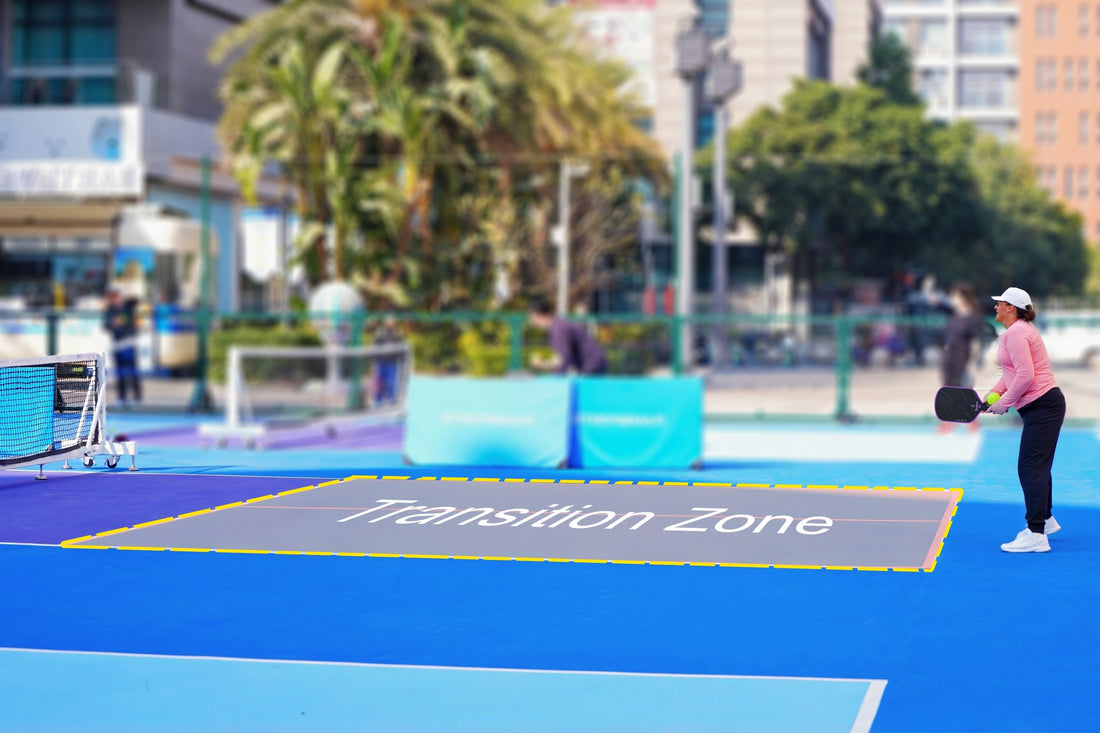Pickleball 101: Should I Practice Fast Hands in the Transition Zone?
The transition zone, often called "no man's land", is a tricky area on the pickleball court. It’s the space between the baseline and the non-volley zone, where many players find themselves caught off guard. One question that often arises is whether practicing fast hands in this area is worth your time. Let’s break it down.
Understanding the Transition Zone
The transition zone is where your opponents’ shots can come at unpredictable angles and speeds. Standing here too long can leave you vulnerable, but navigating this area effectively is critical to advancing to the kitchen line—a key position in pickleball.
Practicing fast hands in this zone can be a game-changer. Why? Because it prepares you for quick exchanges and helps you stay in control, even when the ball speeds up. However, let’s explore whether it’s the best use of your practice time.
Benefits of Practicing Fast Hands
-
Improved Reaction Time: The transition zone is often where fast volleys and drives occur. Practicing fast hands sharpens your ability to react swiftly and keep the ball in play.
-
Enhanced Confidence: By building muscle memory and comfort in high-pressure situations, you’ll feel more confident advancing to the kitchen line.
-
Better Defense: Fast hands allow you to counterattack effectively when your opponents try to keep you pinned in the transition zone.
When Fast Hands Practice Is Essential
-
Playing Against Aggressive Opponents: If you’re facing players who rely on powerful drives and quick volleys, fast hands can be your best defense.
-
Improving Reflexes: If you’ve noticed you’re struggling to handle fast-paced exchanges, dedicating time to fast hands drills is a wise choice.
-
Boosting Mobility: Practicing fast hands can also improve your overall movement and readiness as you work to advance to the kitchen line.
A Balanced Approach
While practicing fast hands is beneficial, it’s essential to balance your training. Focus on these additional skills:
-
Dinking and Soft Game: Your goal is to get to the kitchen line, where you can dominate with dinks and controlled play.
-
Third-Shot Drops: Perfecting this shot will make your transition smoother and reduce your reliance on fast hands.
-
Court Awareness: Understanding when to move forward or hold your position is just as crucial as reaction time.
Drills to Try
-
Quick Volley Exchanges: Partner with a friend and practice rapid volleys, gradually increasing speed to simulate high-pressure situations.
-
Shadow Play: Move through the transition zone while mimicking fast volleys to develop muscle memory.
-
Reaction Wall Drills: Use a wall to practice quick reactions by hitting and returning shots at varying speeds.
Final Thoughts
Practicing fast hands in the transition zone can elevate your game, especially when paired with other foundational skills. It’s all about balance and knowing when to implement these quick reflexes during a match.
Next time you’re on the court, dedicate a few minutes to fast hands drills and notice the difference in your reaction time and confidence. With consistent practice, you’ll become a more well-rounded and unstoppable pickleball player!




